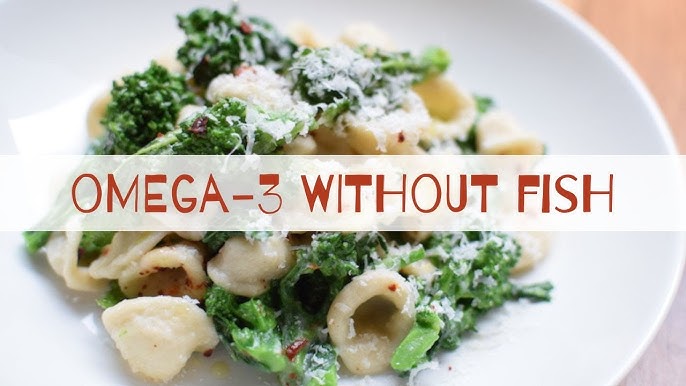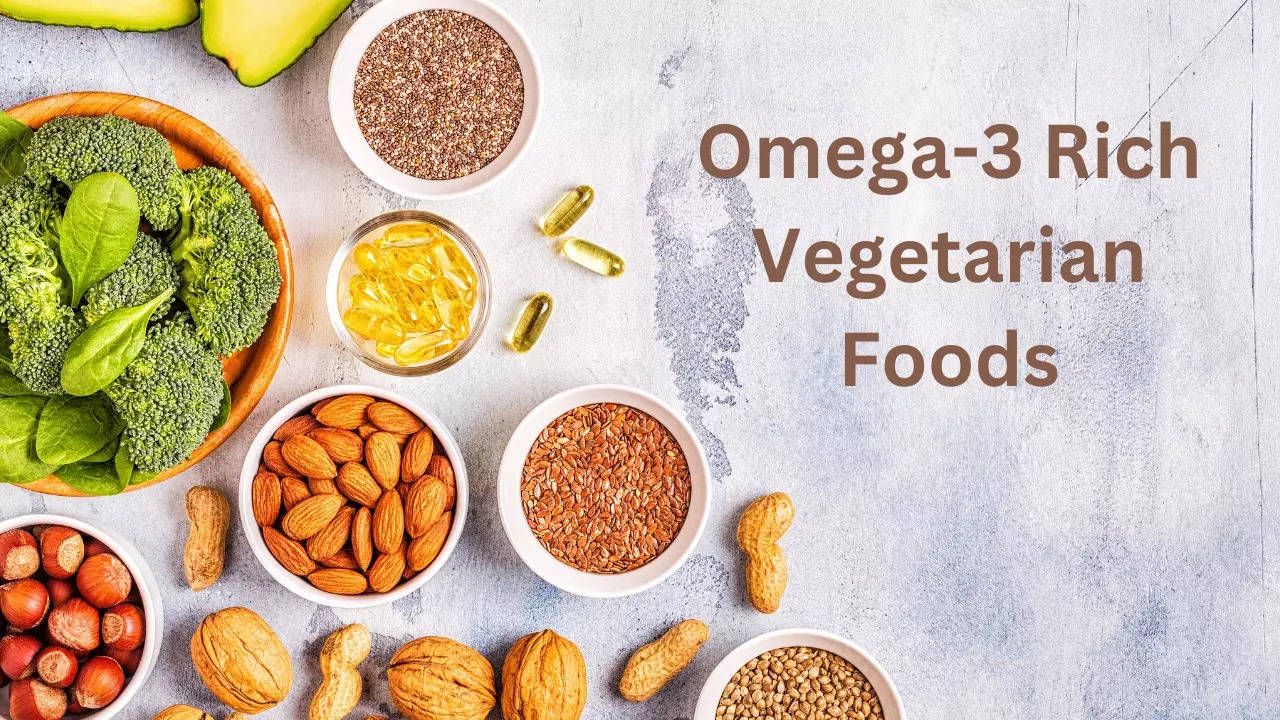Omega-3 fatty acids are important nutrients for your brain, heart, skin, and joints. Most people think of fish when they hear “omega-3.” But for those on a vegan or vegetarian diet, fish is not an option. The good news? You can still get plenty of plant-based omega-3s through common Indian foods.
This article explains what omega-3 fatty acids are, why they matter, the best Indian vegetarian sources of omega-3, and how to add them to your meals easily.
What Are Omega-3 Fatty Acids?

Omega-3s are a type of healthy fat that your body needs but cannot make on its own. So you must get them from your food. There are three main types:
- ALA (Alpha-linolenic acid) – found in plant foods like flaxseeds and walnuts.
- EPA (Eicosapentaenoic acid) – mostly found in oily fish and some algae.
- DHA (Docosahexaenoic acid) – also found in fish and marine algae.
For vegetarians and vegans, ALA is the main source. Your body can convert some ALA into EPA and DHA, but not in large amounts. So it’s important to eat enough ALA every day.
Also Read Boost Your Energy Naturally
Why Omega-3s Are Important for Health
Omega-3 fatty acids have many health benefits. They help:
- Support brain health and memory
- Reduce inflammation
- Improve heart function
- Lower the risk of diabetes and stroke
- Maintain healthy skin and hair
- Reduce symptoms of depression and anxiety
In India, where heart disease and diabetes are common, getting enough omega-3s can be very helpful.
Best Plant-Based Omega-3 Sources in India
Let’s explore the top vegetarian sources of omega-3 that are easily available in Indian kitchens.
1. Flaxseeds (Alsi)
Flaxseeds are one of the richest sources of ALA. Just one tablespoon of ground flaxseeds gives you a large part of your daily omega-3 needs.
- Add them to smoothies, oatmeal, roti dough, or parathas.
- Always grind flaxseeds before eating for better absorption.
2. Chia Seeds
Chia seeds are packed with omega-3, fiber, and protein.
- Soak them in water or plant milk and eat as a pudding.
- Sprinkle on salads, porridge, or breakfast bowls.
3. Walnuts (Akhrot)
Walnuts are full of healthy fats and ALA. Just a handful daily supports heart and brain health.
- Eat them as snacks or mix into homemade granola or chutneys.
- Use walnut paste in gravies instead of cream.
4. Mustard Oil (Sarson Ka Tel)
Used commonly in North Indian cooking, mustard oil contains ALA and adds strong flavor.
- Use it for cooking sabzis, tadka, and curries.
- Ideal for pickles and traditional recipes.
5. Soybeans and Tofu
Soybeans are rich in protein and also provide omega-3s.
- Make tofu bhurji, soy chaap curry, or add tofu to fried rice.
- Use unsweetened soy milk in smoothies and tea.
6. Hemp Seeds
Hemp seeds provide a great balance of omega-3 and omega-6 fats.
- Blend into chutneys or sprinkle on salads, rotis, and rice dishes.
- Use in homemade protein bars and laddoos.
7. Rajma and Other Pulses
Red kidney beans (rajma), urad dal, and moong are good supporting sources of ALA.
- Rajma chawal is not just tasty but also nutritious.
- Combine dals with vitamin C-rich veggies for better absorption.
8. Algal Oil Supplements
Algal oil is made from marine algae and is a direct vegan source of EPA and DHA.
- Available in capsule form in health stores and online.
- Recommended for those who want to ensure EPA/DHA intake.
Indian Vegan Meal Ideas for Omega-3
Breakfast:
Oats with ground flaxseeds, banana, and almond milk.
OR Chia pudding with chopped mango and jaggery.
Lunch:
Multigrain roti with palak tofu, moong dal, and lemon salad. Cook using mustard oil.
Snack:
Handful of walnuts or roasted soybeans with herbal tea.
Dinner:
Brown rice with rajma curry, hemp seed chutney, and stir-fried vegetables.
Before Bed:
Warm soy milk with a pinch of haldi and jaggery.
How to Improve Omega-3 Absorption
Here are some tips to help your body use the omega-3s you eat:
- Grind seeds like flax before eating.
- Eat with vitamin C-rich foods like lemon, amla, or orange to improve digestion and nutrient absorption.
- Limit excess omega-6 oils (like sunflower and refined vegetable oil), which can block omega-3 function.
- Include healthy fats regularly in meals, especially from seeds, nuts, and legumes.
Frequently Asked Questions (FAQs)
Q. Can I get enough omega-3 without eating fish?
Yes, if you eat a variety of ALA-rich foods daily and consider algal oil supplements for DHA and EPA.
Q. Do I need supplements if I eat flaxseeds and walnuts?
If your diet is rich in ALA, you may be fine. But DHA and EPA are harder to get without supplements, so check with a doctor or dietitian.
Q. Can children and elderly get omega-3 from vegan sources?
Absolutely. Chia seeds, soy milk, walnuts, and flaxseed powder are suitable for all ages.
Q. Is mustard oil a safe source of omega-3?
Yes, when used in moderation and not overheated, mustard oil is a good traditional option for Indian kitchens.
Q. Are Indian vegetarian diets low in omega-3?
Not necessarily. With foods like dals, tofu, seeds, and mustard oil, a vegetarian diet can provide enough omega-3 if planned well.
Final Thoughts
Balancing omega-3s without fish is not only possible, it’s simple with the right choices. Indian vegetarian and vegan meals can be rich in plant-based omega-3s if you include seeds, nuts, legumes, and healthy oils daily. You don’t need to give up your cultural food habits to meet your nutritional needs.
Just add a few smart changes — like grinding flaxseeds, using mustard oil, or trying a plant-based supplement — and you’ll feel the benefits in your energy, focus, and overall well-being.
Author- Ayush

Attractive section of content. I just stumbled upon your website and in accession capital to assert that I
get actually enjoyed account your blog posts. Any way I will be subscribing to your
augment and even I achievement you access consistently rapidly.
Thankfulness to my father who told me on the topic of this
weblog, this website is really remarkable.
lhqybs
Thanks for another informative website. The place else
may I get that kind of info written in such a perfect way?
I’ve a project that I am just now working on, and I’ve been at the look out for such information.
Look at my webpage :: Filling Machine